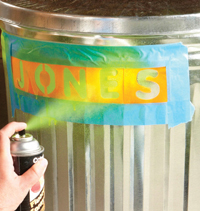
One downside of having stuff is finding what you need, when you need it. Constantly searching for something not only wastes time, but it can drive you bonkers! Labeling can help. Here are a slew of smart and creative labeling tips from our readers and Field Editors.
There should be a 12-step program for people who become addicted to their label makers. It starts when you innocently label tool cabinet drawers. Do the power strip next, and suddenly you just can’t stop. The confusing light switches in the entryway—labeled. The kitchen items you take to potluck dinners—labeled with full names. File folders, the fuse box, pantry jars, tools the neighbors borrow, power adapters—stop before you label again!

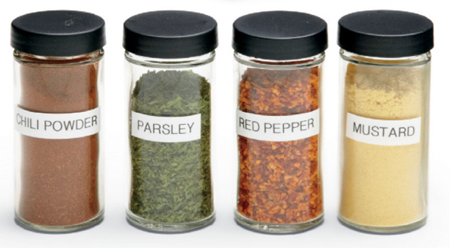
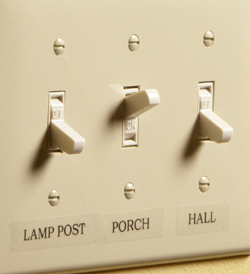
Editor’s Note: Label makers cost $30 to $130 at office supply and discount stores.
Use colored vinyl tape on your wrenches to identify the type. Wrap a strip of blue tape around the handle of metric wrenches and red tape around the SAEs. Don’t cover the whole handle, just a strip of tape once around at one end so you don’t cover up the size marking.

Reader photo
Plastic drawers let you see the nails or screws inside, but you can’t always tell their size. Here’s a simple solution: Cut the labels off fastener boxes and tape them inside the front of each drawer. You’ll know exactly where everything is located at a glance.
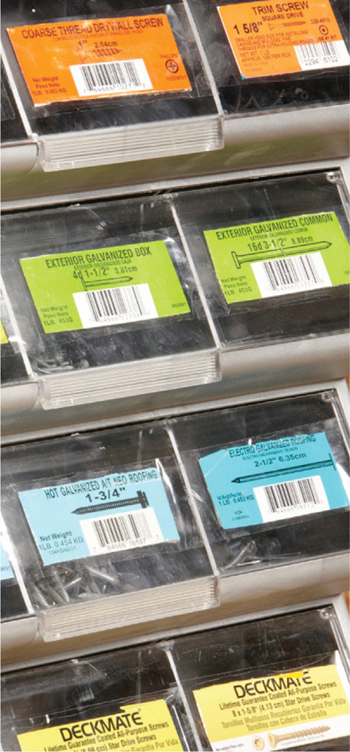

Chalkboard paint is great for creating reusable labels on metal bins, jars, drawers and a ton of other things. When you change the contents of a drawer or jar, you just wipe off the chalk and rewrite the label.
Chalkboard paint is available in spray-on and brush-on versions at home centers and hardware stores.
You can apply chalkboard paint directly to most nonporous surfaces. Or make your own adhesive and magnetic labels by covering mailing labels and refrigerator magnets with chalkboard paint.
You can also buy already-painted self-adhesive chalkboard stickers at amazon.com and other online retailers.
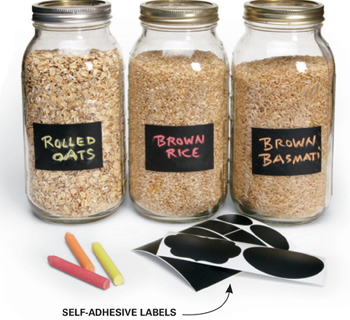
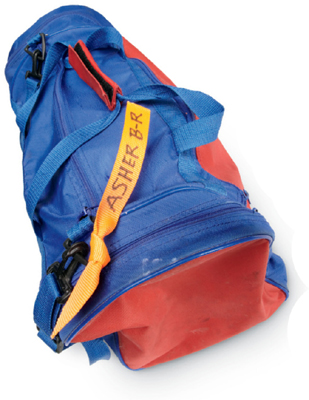
If you carry around soft-sided bags like camping duffels, sports bags and tool cases, you’ll want labels that stand up to being squashed, mashed, soaked, yanked, dropped and rolled around. They can be tough to find, but a good solution is nylon webbing (found at camping and fabric stores) or short lengths of tie-down straps. Just tie the webbing around the handle of your bag and label it using a waterproof marker.
If you have terrible handwriting, try making magnetic labels with a home printer. Just create the labels on your computer, put the magnet sheets in your printer, hit “print” and cut them up. They’re great on metal file drawers and tool chests. When you reorganize, just move the labels around or add new ones.

Editor’s Note: Avery Magnet Sheets, which are compatible with ink-jet printers, are available in five-sheet packs at office supply stores and online retailers.
Whenever you buy child-protected bottles of aspirin or ibuprofen, color both of the white arrows with red fingernail polish. That way, when you need some medicine, you can immediately see how the arrows line up and get the cap off fast.

A lot of people love large plastic bins. But remembering what’s inside each bin is tough, and reading a small label is nearly impossible when your bins are stored high on garage shelves. Solve both problems by labeling your bins with large numbers. Each number corresponds to a page in a binder that lists the contents of each bin. It’s simple to change the list, and it’s a heck of a lot easier to find what you need by checking the binder than by rummaging through each bin.

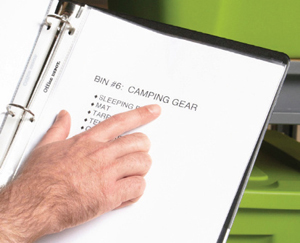
Editor’s Note: When it comes to bin I.D. tags, you can also try adhesive storage pouches that let you slip index cards in and out easily. You can find these at office supply stores or online retailers.
Label all the important switches and valves around the house with shipping labels. These include the main water shutoffs and the well electric switch. Then take photos of all the shutoffs with the tags attached and put them in a “House Reference” binder. If there’s a leak when you're not home, everyone will know what to do to prevent a disaster.
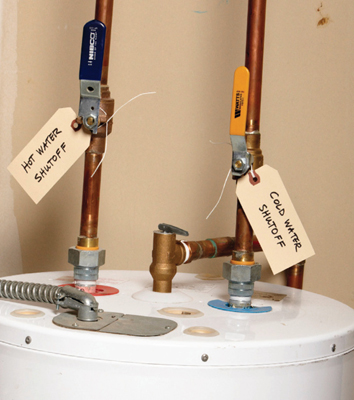
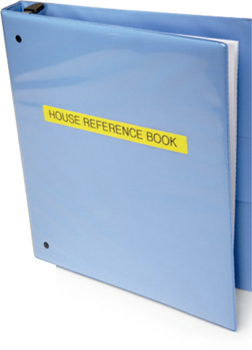
Self-adhesive vinyl letters make great labels indoors and out. You can get them at office supply stores, art stores and online retailers. Some versions are reflective and perfect for dark areas such as basements and the garage. Use them inside the kitchen cabinets to remind kids to put things back where they got them!
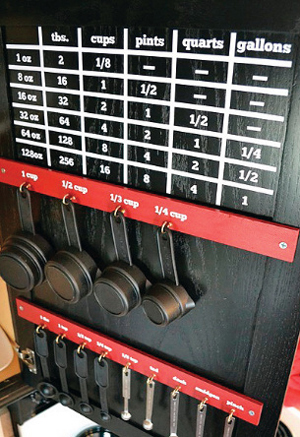
Reader photo
An old-school labeling technique is to use plastic stencils (available at art and office supply stores) and spray-paint your name and address on things that have a tendency to “walk” away. Stencil trash cans, sleds, tool cases and recycling bins. If your children don't stop wandering away, stencil them too!
